
kscarbel
-
Posts
1,114 -
Joined
-
Last visited
-
Days Won
8
Content Type
Profiles
Forums
Gallery
Events
Blogs
BMT Wiki
Collections
Store
Posts posted by kscarbel
-
-
Transport Topics / march 25, 2013
Freightliner Trucks has introduced a new severe-duty truck that will replace the Coronado SD model.
The manufacturer displayed the Freightliner 122SD at the Mid-America Trucking Show, which took place from March 21-23 in Louisville, Ky.
Standard power comes from the Detroit DD15 (Mercedes-Benz OM472) diesel. Detroit’s DD13 (OM471) and DD16 (OM473) diesel are options, as is the Cummins ISX15. Power ratings of up to 600 horsepower and 2,050 pound-feet of torque are available, Freightliner said. The Freightliner and Detroit brands are owned by Daimler Trucks North America.
Eaton manual and automated manual transmissions and Allison automatic transmissions are offered.
The truck features an aluminum cab with steel reinforcement. The chassis is available with a single or double channel frame with tensile strength of up to 120,000 psi and up to 5 million RBM.
The truck features gross vehicle weight ratings of up to 92,000 lbs. and gross combined weight ratings of up to 160,000 lbs. The truck is tailored to towing/recovery, oil and gas field, construction, dump, vocational and other specialty applications, Freightliner said.Other standard and optional features include a 1,700 square inch, halogen headlights with replaceable glass lens reflectors, a one-piece skid plate, disc brakes and an in-cab battery box for day cab models.
-
A 16-speed AMT from Eaton - Very interesting. Great to see a U.S. company giving ZF some competition with American innovation.
-
Trailer/Body Builders / March 22, 2013
Eaton has launched a new family of UltraShiftPLUS transmissions designed exclusively for Navistar to maximize fuel efficiency in line-haul applications.
To be co-released by the two companies, the new 16-speed direct drive automated mechanical transmissions are designed with a small 17 percent step between gears to optimize time in a diesel engine’s most efficient RPM zone and help reduce fuel consumption.
The new UltraShift PLUS LSE (Linehaul Small-Step Efficiency) will be released initially with Navistar’s proprietary MaxxForce13L SCR engines on the International-branded vehicles and followed shortly thereafter with Cummins ISX15 engines.
Fleets involved with testing the new transmissions have reported fuel economy improvements from two to four percent. Production is scheduled to take place in April of this year.
“The direct drive design also boosts the efficiency of the transmission gear train, to further promote excellent fuel consumption,” said Shane Groner, North America product planning manager for Eaton’s Commercial Vehicle Transmission Division. “All of the other features and benefits of the UltraShift PLUS are included in this newest addition to our lineup.”
”Fuel economy has been the cornerstone of the International ProStar, and with the collaboration with Eaton on the 16-speed direct drive automated transmission, we’re able to deliver even more tangible fuel economy benefits to our customers,” says Steve Gilligan, VP, Product Marketing, Navistar.The new UltraShift PLUS LSE transmission has 16 forward gears and two reverse gears, and an overall ratio of 14.40. The standard warranty is 5-year/750,000 miles for the transmission and 3-year/350,000 miles for the clutch.
All UltraShift PLUS transmissions use an electronic clutch actuator to provide faster shifting and smoother engagement. The clutch is fully engaged at idle, giving the driver ultimate control in challenging situations, like parking lots, loading docks and other tight spaces.
Additional UltraShift PLUS features include:
- Fully automated two-pedal design (no clutch pedal).
- Safety features include auto neutral and Intelligent Hill Start Aid, which prevents roll-back and roll-forward while launching on grades using foundation wheel brakes.
- Automatic, Manual and Low modes offer driver full control.
- Creep Mode allows the vehicle to be driven at a constant speed (optional).
-
DailyDiesel, on 24 Mar 2013 - 09:35, said:
Very interesting. It is strange and a little upsetting when you realize that only two domestic truck manufacturers remain intact, PACCAR and Navistar. With VW sniffing around the door we may be at one builder before you know it.
This is the very point that I've been making. It should be extremely upsetting to all Americans that the greatest country in world has been reduced to two truckmakers (Navistar and Paccar). It is humiliating that America no longer had the ability to compete and lead in our own domestic truck market.
At one time, American truckmakers like Mack Trucks put the world on notice that U.S. heavy truck design was second to none. However the majority of the trucks on America's highways today are produced by the Germans and Swedes. Foreign domination of key U.S. industriies only serves to further erode our country's economic foundation.
It's shocking that so many Americans here feel it is perfectly acceptable for the epitome icon of the U.S. truck industry, Mack Trucks, to be owned by a European truckmaker. Perhaps if Ford was purchased by Toyota, or Navistar by Volkswagen, they'd get the wake-up call.
The Mack truck name should be under the American flag, not the flag of Sweden.
A Swedish Mack, designed and built by Volvo Trucks North America with a mass of Volvo components, is NOT a Mack truck.
-
 2
2
-
-
This is a typical Volvo ad. Note how the gentleman never identifies himself nor his position. He's just an advertising company employee.
In the days of Mack Trucks, a gentleman would speak with credibility, something like this:
"Hello! My name is Terry Warmkessel and I'm the product planning director at Mack Trucks"
He told you his name and his position in the company, and you could feel that Terry knew what he was talking about.
You immediately sensed that he was not only a truck person, but a passionate Mack truck person.
To the truck buyer, he had integrity and was believable. He was a hands-on real world person within Mack trucks and you had no doubt about that. By the end of his promotion, he'd gained your respect and you knew that you could confidently weigh his comments in making your truck buying decision.The inclusion of "Global Fleet of Volvo" is no accident. That's a Swedish pride jab, a subtle reminder that Mack now is merely a Volvo Group brand name. My background, from the US to the global market, has allowed me a much broader perspective on Volvo (and the other European truckmakers). Volvo's core allegiance is to Sweden (which is to be expected). Volvo's just in the U.S. for the money, and to get market share towards their dream of being the global no. 1. They don't care about Mack or America. The Mack name is just serving a purpose (for now anyway) towards their goals.
-
Bloomberg / March 22, 2013
Volkswagen AG, Europe’s largest carmaker, made a low-ball initial offer to other holders of MAN SE stock as it pushes for full control of the German truckmaker.
VW, which already owns 75.03 percent of the Munich-based company’s voting rights, will offer 80.89 euros ($104.34) per share, a 7.1 percent discount to MAN’s closing price yesterday, according to a statement yesterday from the truckmaker.
Shareholders that don’t accept the cash offer will receive a guaranteed annual dividend of 3.07 euros per share. VW and MAN will agree on final conditions after they receive full valuation reports from auditors, the truckmaker said.
“Cash compensation came in clearly below our and market expectations of around 95 euros,” Michael Punzet, an analyst with DZ Bank in Frankfurt, said today in a note. “We don’t expect high acceptance for the cash offer,” considering the dividend yield is about 3.8 percent.
Volkswagen is pushing for deeper integration between MAN, its own commercial-vehicles unit and Swedish truckmaker Scania AB, which it
also controls with a 70.94 percent stake, to leapfrog ahead of Volvo AB and Daimler AG as the biggest producer of heavy trucks in Europe.
A completed deal would allow VW to fully integrate MAN into its operations.
MAN’s common shares fell as much as 4.3 percent to 83.36 euros and were down 4.1 percent at 9:33 a.m. in Frankfurt trading. Before the offer, the stock had climbed 7.9 percent this year, valuing it at 12.4 billion euros. VW shares rose 0.6 percent to 156.10 euros.
Domination Goal
The Wolfsburg, Germany-based automaker said in January that it would talk with MAN’s board to discuss its goal of seeking a domination agreement. The deal has to be approved by both companies and by the truckmaker’s shareholders meeting, which is scheduled for
June 6.
VW is legally required to look at the average price of the shares in the last three months and the value of the stock based on an independent evaluation of the company, and offer MAN shareholders the higher of the two figures. KPMG and PricewaterhouseCoopers
are conducting the assessments.
MAN, Europe's third-largest truckmaker, said it may slow investments and will work to cut spending this year as the region’s shrinking economies cause earnings to drop faster than sales. MAN last month forecast a “disproportionately large” operating profit drop this year as sales suffer a“slight” decline.
Enough Votes
VW, which already holds enough votes to push through the deal at an MAN shareholders meeting, owns 73.7 percent of the total share capital. The preliminary offer values the outstanding stock at about 3.3 billion euros. VW spokesman Marco Dalan declined to comment beyond the MAN statement.
Volkswagen announced a management reshuffle last June meant to push forward the truckmaking cooperation. As part of the changes, Leif Oestling gave up his post as CEO of Scania to join Volkswagen's management board and help forge the alliance. MAN CEO Georg Pachta-Reyhofen is now overseeing the group’s industrial engines business, along with his duties running the truckmaker.
Volkswagen has been working for six years on closer ties with MAN and Scania. Volkswagen increased its holding in MAN to a majority in 2011, then raised its stake last June to its current level. -
I've driven the Ultrashift plus and the iShift. The iShift was heads and shoulders above the Eaton in terms of smoothness and proper gear selection.
I'm very much wondering if you experienced the current Eaton UltraShift Plus AMT. Most people with negative impressions actually drove the earlier UltraShift DM3 (which used a centrifugal type clutch which engaged via engine speed). Along other things, the current UltraShift Plus uses an electric clutch actuator which now allows the clutch to engage at idle, which significantly improves slow speed maneuvering. The original UltraShift DM3 and the current UltraShift Plus are really two different animals. Eaton should have created an altogether new name for the current product.
And now, the UltraShift Plus "Advantage Series" are coming out with a lot of great new features (and a 5-year/750,000-mile warranty for linehaul applications.). Check it out, or go look at the twin-countershaft ZF AS Tronic AMTs.
-
Scania is brilliant again and again. It's no wonder Mack Trucks forged a decades long relationship with the company.
_________________________________________
Innovative new Scania-designed dual-battery system option
Well-functioning electrics are a prerequisite for high uptime. To reduce the risk of inadvertent discharging or battery failure, Scania has developed a new system with two sets of batteries that safeguard electric supply for starting.
The 24V dual-battery system is mainly intended for applications with high electricity consumption, but provides uptime insurance for all transport types.
Instead of the traditional setup with two 12 V batteries connected in series, the dual-battery system consists of four maintenance-free batteries of two markedly different types.The two AGM-type (absorbed glass mat) starter batteries are optimized for delivering high starting power during a short time. They are kept fully charged at all times and are used exclusively for starting.
The two gel-type service batteries are suitable for deeper discharge cycles. They supply all of the truck’s power consumers – lights, bodywork functions, heating, etc. – which are thus kept entirely separate from the starter circuit.
The entire four-battery set-up with two types of batteries is more compact than a conventional 2-battery system. In most cases, the set-up can be housed in the normal battery box on the LH side of the chassis.
The new dual-battery system is a unique Scania design that differs from a conventional dual-battery set-up in the use of two different battery types that are optimized for different purposes and have a specially-developed control system.
-
 1
1
-
-
yes, if our opinion differs from yours and we continue to support a brand we grew up loving we must be PR employees...what a dumb comment.
You have every right to support a foreign company doing business in the United States, if you so choose. By all means, go purchase a Volvo or Swedish Mack. It's your inalienable right and my opinion certainly won't stop you.
I grew up with Mack Trucks as well. However that legendary American icon truckmaker no longer exists. The sad reality is the Mack name now belongs to a foreign company called Volvo Group, of Gothenburg, Sweden (And don't just take my word for it - ask them).
-
Who owns and produces trucks at their Saltillo Truck Manufacturing Plant? I''l give you a clue....this compaNy produces Cascadias. There have been complaints of the quality from day one. Recently Freighliner annoucnced it's 100,000 truck made in its Mexican Plants for use in country and export to Latin America,Canada and the UNITED STATES. Thats 100,000 trucks NOT made or supporting local economies here in the UNITED STATES. Now compare them to Mack. All exports to the world are made In MACGUNGIE,PENNSYLVANIA NOT -Santiago Tianguistencoedo de Mexico, Mexico OR Municipio de Saltillo, Coahuila Mexico like Freightliner.
I’m sorry, somehow when I mentioned Freightliner’s plants at the end of that post you came under the impression that I was defending and/or promoting Freightliner? Otherwise you lost me.
I’ll say again that both Volvo and Freightliner are a foreign truckmakers which I do not support, as their goal is to fully takeover the U.S. truck market. German-owned Freightliner and Sweden-owned Mack's domination of the U.S. truck market is not good for America.
Aside from the 19-liter KTA600-powered Powerliner (pictured) and the company's decision to diversify its product line by selling Volvo Class 6 and 7 in the US (this all being when Freightliner was American owned), I've never been a big fan.
Anyway, since you want to discuss Freightliner, let’s put forth the facts about its plants.
Cleveland, North Carolina - Produces the Century Class S/T, Columbia, Classic and Classic XL. Also, the Argosy II COE is produced there for export to Australia, New Zealand and South Africa).
Mount Holly, North Carolina - Produces Freightliner Business Class models.
High Point, North Carolina - Produces Thomas Built Buses.
Gaffney, South Carolina - Produces custom truck chassis (walk-in vans, motor homes, school and commercial buses).
Portland, Oregon - Produces Western Star 4700, 4800, 4900, 6900 and mil-spec models (like the M915A5). (You mentioned Portland – they’re still building trucks but now Western Star instead of Freightliner models).
Saltillo, Mexico - Exclusively produces the Cascadia.
Santiago Tianguistenco - Produces Freightliner Business Class models, FLD Series, Century Class, Columbia and Coronado models for Mexico's domestic market, Central and South America as well as the US and Canada.
In summary, I don't like Daimler's ownership of Freightliner (and Western Star) any more than Volvo's ownership of the Mack brand. Foreign domination of America's truck industry is no good for our country (This is NOT how America over the last 100 years became the greatest country in the world).
I have no problem with a truckmaker building trucks in Mexico for Latin America (although for South America, I'd be producing in Brazil), but I resent any and all Mexican production being sold in the United States (quality levels are irrelevant).
-
Pics. The I shift is supposed to be the best of the semi autos.
With all respect, I'd rather have a Eaton twin-countershaft UltraShift Plus AMT or a ZF twin-countershaft AS Tronic AMT. The single countershaft Volvo I-Shift is inherently weaker.
The Volvo VNX is basically a Mack-brand Titan with Volvo cab and hood. Same Volvo chassis (called "Cornerstone" when it's built with a Mack cab and hood). Same Volvo D16 powertrain.
Whether you like the Volvo look or the Mack-brand look, Volvo will gladly take your money (away to Gothenburg, Sweden).
-
Scania has brought back the iconic “Streamline” name, first introduced as an option on the 3-series "R" cab, with the introduction of the latest ultra aerodynamic 4-series (4th generation) "R" cab.
- New Euro-6 (roughly EPA2010) 13-liter engines are 2-3 percent more efficient.
- Scania’s advanced Opticruise and Scania Active Prediction technology can each add 2-3 percent fuel savings.
- Featuring enhanced aerodynamics and reduced transmission friction, overall potential fuel savings of 8 percent are possible.
Euro-6 (EPA2010) Engines:
- 9-liter - 250/280/320/360hp
- 12.7-liter - 370/410/450/490hp
- 16.4-liter V-8s - 520/580/730hp
http://www.scania.com/images/P13301EN%20Scania%20Streamline_tcm40-358144.pdf
http://www.scania.com/images/P13302EN%20Smoothing%20the%20shape_tcm40-358148.pdf
http://www.scania.com/images/P13303EN%20Opticruise_tcm40-358169.pdf
http://www.scania.com/images/P13304EN_tcm40-358175.pdf
http://www.scania.com/images/P13305EN_tcm40-358184.pdf
http://www.scania.com/images/P13306EN%20Boosting%20uptime_tcm40-358154.pdf
-
Trailer/Body Builders / March 21, 2013
Navistar announced that its International truck dealer network has invested nearly $60 million in the past year to renovate or add more than 250 additional service bays.
“We know that one of the most important reasons our customers purchase International products over and over again, is because of the valuable relationship they have with their dealer,” said David Gerrard, senior vice-president, distribution, Navistar. “There are thousands of men and women in our dealer network who are on the frontlines with our customers, ensuring their trucks and drivers are operating with maximum uptime.”
Dealerships throughout the network have adopted newly prescribed customer service requirements including the expansion of service hours by more than 22 percent, increased technician training and investments in service and maintenance equipment.“The adoption of these guidelines over the past several years has resulted in faster repairs, completed with the highest degree of quality,” said Gerrard. “More importantly, it means trucks are back on the road more quickly, delivering to our customers’ bottom line.”
To provide an extended support experience, many dealers offer mobile maintenance crews for fleets and some will provide large fleet customers with dedicated International service technicians on-site for enhanced service and support.
International’s dealer network includes more than 870 locations and 7,200 technicians across North America. It is also supported by a nimble parts distribution network including ten distribution centers.
-
Fleet Owner / March 20, 2013
LOUISVILLE, KY. Wednesday evening during a news conference here at the Mid-America Trucking Show, Dana unveiled its new Spicer EconoTrek tandem axle for 6x2 tractors. “This axle is a new durable, lightweight 6x2 configuration that improves performance, reduces maintenance and increases fuel economy for heavy-duty linehaul tractors,” said Steve Slesinski, director of global product planning.
He explained that the axle’s design improves fuel economy by up to 3% through decreases in mechanical drivetrain energy loss and reduces weight by up to 400 lbs compared to a “traditional” 40,000-lb tandem axle arrangement.
“At Dana, we continually evaluate the performance of our drivetrain designs to ensure that they deliver long-term value for fleet owners,” noted Pat D’Eramo, president of Dana Commercial Vehicle Driveline Technologies. “Updated with new components and designs to increase fuel efficiency and durability, the Spicer EconoTrek tandem axle offers performance improvements that can boost the productivity of 6x2 fleets.”
Available this June, the Spicer EconoTrek combines the company’s newly upgraded Spicer S170 and S190 single-reduction single drive axles with the new lightweight Spicer S20-045B tag axle. Together, these axles provide reliability and durability for the industry’s lightest 6x2 tandem axle configuration, stated Slesinski.
First introduced in 2004, according to Slesinski, the Spicer S170 and S190 high-performance single drive axles have been outfitted on more than half-a-million commercial vehicles and are “designed for efficiency while withstanding the most demanding applications.” He said the axles have now been improved to “ensure optimal operation and durability with less required maintenance… and are even more resistant to abusive differential spin-out events.”
Slesinksi said the new Spicer S20-045B tag axle features advanced designs leveraged from Dana’s popular line of Spicer commercial-vehicle drive axles. Made of high-strength, micro-alloy steel with a thin-wall, square-edge formed axle housing box, it weighs 20 to 30 lbs less than competitive models. “The axle is shaped like a low-profile drive axle to provide significant strength for the axle’s vertical load-bearing capabilities, reducing tire wear while simplifying suspension and chassis installation at a lower weight,” he advised.The EconoTrek is optimized for use with electronic-controlled air suspension systems, such as the new Bendix eTrac system, said Slesinski. He pointed out that the eTrac system will seamlessly transfer weight to the Spicer S170 or S190 series drive axle for improved low-speed traction when combined with the Spicer patented wheel-differential lock feature.
According to Slesinski, fleet owners can “quickly and accurately calculate the money-saving advantages” of the EconoTrek tandem axle via its www.dana.com/commercialvehicle website.
Dana also noted that its Spicer Diamond Series driveshaft will be featured on Navistar’s International LoneStar truck on display at the Mid-America Trucking Show. According to Dana, this installation demonstrates how weight-sensitive customers can increase payload and improve their bottom line by pairing its SPL universal-joint technology with the “robust aluminum” Spicer Diamond Series tube.
“Commercial-vehicle OEMs and fleet owners are quickly recognizing the performance and maintenance advantages of our Spicer Diamond Series driveshafts,” said Pat D’Eramo, president of Dana Commercial Vehicle Driveline Technologies. “Our innovative driveshaft is being used by a forward-looking OEM at the industry’s most popular event of the year, which clearly demonstrates the enthusiasm for our cutting-edge technologies and the proven benefits they can provide to fleet owners.”
Dana also announced the expansion of its third-party aftermarket distribution network for medium- and heavy-duty truck carriers, adding new sites in Atlanta, Seattle, Las Vegas, and Oklahoma City to bring its total network to 20 locations.
The company said that as the “demand for high-quality, fuel-efficient and maximum-performance aftermarket parts continues to grow,” it is increasing its carrier distribution network and utilizing strategically placed facilities to provide same-day delivery, depending on the location and type of carrier.
Dana is also making customer-service improvements, including adding an on-staff carrier expert, extending emergency truck-down hours to 6:00 p.m. EST and providing an inventory exchange program, all while continuing to offer a two-year warranty.
-
Fleet Owner / March 20, 2013
LOUISVILLE, KY. Cummins believes it can keep beefing up its share of the global truck engine business by leveraging its worldwide manufacturing and engineering scale – plus what its executives call “critical partnerships and joint ventures” – to deliver ever-more efficient engines: especially where fuel economy is concerned.
“If we do it well, our global scale will give us an opportunity to boost fuel economy but do so at a final cost that meets our customer needs,” explained Rich Freeland, president of Cummins’ engine business at a press event held here ahead if the 2013 Mid America Trucking Show.
“That’s because we believe the battlefield over the next decade [in the global trucking business] will be focused on fuel economy,” he said. “We believe we have a lead where fuel economy is concerned and we want to keep growing it.”
Freeland said that over the last decade, Cummins has boosted its medium-duty truck engine market share from 10% to 52%, while growing its heavy-duty engine share from 20% to 40% – with demand split down the middle, half coming from the on-highway segment and half from the off-highway market.
Steve Charlton, VP and chief technology officer for Cummins’ engine business, noted that the company’s global scale is what in part helped it boost fuel economy by an average of 2% for its 2013 truck engine lineup in part via core technology improvements and the ability to use lighter-weight 10W-30 motor oil.
“Having that global scale allows us to better direct component development four or five years out from a product launch,” he said. “It helps us offer a range of improvements, such as better low-speed performance, which again improves fuel economy.”
For example, Charlton pointed out that Cummins’ heavy-duty truck engines now on average sustain highway cruising speeds between 1200 and 1300 rpms on average versus 1450 to 1500 rpms just three or four years ago – and lower rpms translates into fuel savings for customers.
Charlton also noted that the company’s ongoing work with the “SuperTruck” project sponsored by the U.S. Department of Energy and new research on telematics should also provide further performance improvements for customers in the future.
“That’s why success starts with our global footprint plus partnerships and joint ventures with key suppliers – it allows us to bring technology, emissions compliance, and fuel economy together,” added Freeland, pointing to the recent deal Cummins forged with Eaton Corp. as but one example of how “deep integration” with partnerships can generate further fuel economy gains, which in the case of the Cummins-Eaton partnership range from 3% to 6%.
Cummins also reorganized the leadership of its engine business earlier this year so it could better position itself to take advantage of the growth in engine demand in different areas of the world.
For example, Dave Cromption, VP and GM of Cummins’ engine business, noted that of the 1 million engines the company produced since 2012 – and that includes all engines, truck and otherwise – some 50% of that demand came from outside the U.S.
While Cummins sold 396,000 engines in North America, it also sold 256,000 in China and 158,000 in India, with Europe (52,000) and South America (45,700) in distant fourth and fifth place, respectively, in terms of market size.
“That’s part of why we reorganized our leadership, because corporations are moving from a ‘multinational’ structure to a ‘global’ one,” he said – adding the 14 joint ventures Cummins currently maintains helped drive $2 billion in revenues for 2012, which is why forming more such partnerships is a key part of the company’s strategy going forward.That includes not just diesel engines, either. Jim Arthurs, president of the Cummins Westport joint venture – which produces spark-ignited natural gas engines ranging from 5.7L to 12L – noted that while sales of natural gas-fired models remained at less than 1% of total truck engine sales in 2012, they are expected to jump to 3% to 4% in 2014 and perhaps to 8% to 10% further out.
To capitalize on that trend, Cummins Westport is planning to ramp up production of the new ISX12 G natural gas model from April through August. “We intend to build a good number of these engines,” Arthurs said.For the trucking industry in the U.S., such changes are designed to create a more “customer-centric” business model for Cummins versus a “product-centric” one, Cummins’ Crompton explained – one that focuses on delivering not just better products but better customer support services as well.
In terms of U.S. demand, Jeff Jones, VP-North American engine business for Cummins, noted that while demand for Class 8 trucks this year is right now trending lower than 2012 – some 237,000 to 240,000 units versus 250,000 units in 2012 – he believes orders will strengthen in the second half of the year, as opposed to 2012, when they strengthened in the first half.
“We see order backlogs increasing, which means confidence is increasing though it is fragile,” noted Freeland. “The next move we anticipate in terms of production is up.” -
Trailer/Body Builder / March 21, 2013
Navistar International Corp. announced third-party controlled fuel-economy tests this summer involving its ProStar tractors against competitor models.
“We’re developing new products like our MaxxForce 13 liter SCR [selective catalytic reduction] equipped engines with performance first – and the most important performance factor today is fuel economy,” said Jack Allen, president of the company’s North America Truck and Parts subsidiary, during a press event at the 2013 Mid America Trucking Show. “Our engineers are interested in pushing out trucks to the limit.”
Navistar showed off two initial production-builds of ProStartractors equipped with the new MaxxForce 13 SCR engine, with horsepower options ranging from 365 to 475 hp producing from 1,250 to 1,700 lb,-ft. of torque. Allen said Navistar expects to start broadly shipping ProStar trucks equipped with its new MaxxForce 13 to customers by the end of April.
“We believe the 13 liter engine is ideal for most fleet applications across the country in terms of power and fuel economy needs, for linehaul or regional operations” he said – noting that Navistar put its 13 liter engine through a “grueling” test cycle, with 28 field test vehicles racking up what will total nearly six million miles of operation across a diverse range of climates, altitudes and conditions by the time the engine is “officially” launched in April.
Allen added that Navistar has shipped to-date 1,100 ProStar tractors spec’d with Cummins ISX 15 liter SCR-equipped engines since December last year and pointed out that both companies expect big things from their renewed collaboration. “Back in 2008 we delivered 13,000 to 14,000 trucks equipped with Cummins engines,” Allen noted. “So we have high expectations where this combination is concerned.”
He also pointed out a special “Project Horizon” demonstration truck crafted by Navistar and brought to the Mid America show to highlight what he called “near term” possibilities in terms of making the OEM’s vehicles more efficient and driver-friendly.
“This is not a ‘way out there’ vehicle,” Allen said. “This is a ‘near term’ demonstration project, with the things you’ll see on this vehicle reaching the market 24 to 36 months from now.”
On another front, Troy Clarke, Navistar’s president and COO, noted that the turnaround effort launched by the company last year is going well, with its cash balance, for example, well ahead of its expectations.“It’s not the end of our journey; it’s just the beginning,” he stressed. “But it shows we’re making progress.”
-
Fleet Owner / March 20, 2013
LOUISVILLE, KY. Kenworth Truck Co. unveiled two new truck models at the 2013 Mid America Trucking Show this week – the T880 vocational truck and a 52-in. mid-roof sleeper configuration for its T680 tractor.
Kevin Baney, Kenworth’s chief engineer, said key attributes of the T880 include: a stamped aluminum cab with more interior space; a panoramic windshield for enhanced visibility; triple-sealed doors; a 5-piece hood for easier and faster repairs; air-assisted hydraulic clutch; complex reflector headlamps; and new lightweight, factory-installed lift axles.
The T880 is available in a 116.5-inch BBC and a 122.5-inch BBC standard length with two hood configurations: one designed specifically to better accommodate the company’s 12.9-liter Paccar MX-13 engine while the other larger hood covers the Cummins ISX15 engine option, which offers up to 600 hp and 2,050 lb-ft of torque.
Baney noted that Paccar updated the MX-13 for the 2013 model year, reducing its weight by 100 lbs. and improving fuel economy by some 3.5% over the previous version. It also offers onboard diagnostics and more engine ratings; up to 500 hp and 1,850 lb.-ft. of torque.
The 52-in. mid-roof sleeper configuration now being rolled out for Kenworth’s T680 tractor is designed to accommodate the need of tanker and flatbed fleets. However, the OEM offers an aerodynamic roof cap as well for its mid-roof sleeper for dray van trailer operations; a configuration that offers more upper bunk storage space as well, Baney noted.
Kenworth is also assessing aerodynamic cab roof and side fairing modifications for its K270 and K370 medium-duty cabover trucks designed by its brother company Leyland in the U.K. Those fairings, combined with an aerodynamically tapered truck body, helped improve fuel economy by 8% for the vehicle at highway speeds in U.K. road tests, according to the manufacturer.
Finally, the OEM showed off a special demonstration vehicle dubbed the T680 “Advantage” to demonstrate the possibilities for fuel economy savings if fleets engage in comprehensive spec’ing efforts integrating the powertrain, tractor, and trailer as a single unit.
Fitted out with a battery-powered Bergstrom engine-off air conditioning system, aerodynamic enhancements to reduce drag, wheel hub covers, and other improvements, the T680 “Advantage” is designed to show fleets how Kenworth can help them optimize the entire tractor-trailer to maximize fuel economy for their particular operation, Baney told Fleet Owner.
“We’re trying to show fleets how to develop tractor-trailers as a complete package, one that maximizes operational savings for them,” he said. -
Fleet Owner / March 21, 2013
LOUISVILLE, KY. Here at the Mid-America Trucking Show, suspension manufacturer Hendrickson revealed two major new developments: Zero-Maintenance Ride Damping (ZMD) ride technology for trailers and the ULTIMAAX severe-duty rubber suspension for vocational trucks.
“Our new Zero-Maintenance Damping air springs take the hassles of a common suspension wear item—the shock absorber– out of the maintenance equation entirely,” said Scott Fulton, director of new product development at Hendrickson Trailer Commercial Vehicle Systems. “We are excited and proud to unveil this one-of-a-kind technology that makes ‘shock-less’ air suspension systems a reality,” he added. ZMD will become available exclusively through Hendrickson beginning in the first quarter of this year.Available on select VANTRAAX integrated air slider models, according to Fulton, ZMD technology reduces maintenance by eliminating the shock absorbers-- and “robust” chain down-stops replace the rebound limiter function traditionally performed by the shock absorber.
“Along with reducing the risks associated with roadside inspections and CSA violations, these heavy-duty down-stops provide maximum durability, which translates to maintenance savings over the life of the trailer,” said Fulton. Moreover, he added, the down-stops provide reliable protection for trailers being loaded onto rail freight cars.
An additional benefit of Zero-Maintenance Damping air springs is enhanced ride quality, pointed out Fulton. ZMD air springs integrate the damping function traditionally performed by the shock within the air spring itself by exchanging pressurized air through channels interconnecting the bellows and piston of the patent-pending air spring. Unlike a shock absorber whose damping capacity is finite and deteriorates with age, ZMD air springs provide continuous damping at a consistent rate over the life of the air spring, increasing trailer component life, he advised.
The new ULTIMAAX severe-duty truck suspension “truly raises the bar for durability, making it the ultimate in severe-duty rubber suspension technology,” said Ashley Dudding, director of engineering for Hendrickson. “This system has been through more extreme testing than any product developed by Hendrickson to date, including component validation and severe proving grounds testing. We’ve worked with key fleets, running early prototype test units in some of the most extreme applications in North America for the last five years. In addition, in early 2010 we launched a first-generation version of ULTIMAAX in world markets where severe abuse is commonplace and have continued to receive outstanding feedback on the product’s performance.”
In addition to its excellent durability, according to Hendrickson, the ULTIMAAX delivers enhanced stability, handling and ride quality even in the most severe-duty environments where vehicles encounter harsh and unexpected ground conditions. The integration of Hendrickson’s walking- beam technology, with its patented progressive rate spring, provides a balance of loaded stability and unloaded ride quality even in the most rugged environments.
The manufacturer also pointed out that the ULTIMAAX optimizes weight savings without sacrificing durability, “resulting in a product that is hundreds of pounds lighter than competitive suspension systems for higher payloads. In addition, the system has very low maintenance requirements resulting in lower suspension-related costs over the life of the vehicle.
The ULTIMAAX will be available initially in capacities of 46,000, 52,000 and 60,000 lbs, all for vocational and severe-duty truck applications.
Hendrickson also announced that, in conjunction with its upcoming 100th anniversary, it has launched several global/multi-lingual websites. According to the company, the introduction of these regional websites further supports its “commitment to build relationships and provide innovative products and services to benefit fleets, owner operators and truck and trailer manufacturers around the world. “
“It’s important to Hendrickson that we are in the forefront of our industry, both with our products and our marketing tools,” said Mark Slingluff, director of marketing and communications. “As we move into our second century, it is imperative to provide global, websites containing relevant information and useful tools for each area of operation. Developing websites for a region is crucial to operate successfully in our global business environment.
The new websites are:www.hendrickson-intl.com, http://china.hendrickson-intl.com
http://aus.hendrickson-intl.com, http://spanish.hendrickson-intl.com
-
Trailer/Body Builders / March 21, 2013
Peterbilt Motors Company introduced its new vocational Model 567, designed to meet the severe service and high-performance demands of vocational fleets, at the Mid America Truck Show.
The new truck, which is scheduled to go into production in June, was the result of extensive product research and development according to Bill Kozek, Peterbilt general manager and PACCAR vice president. “The time to introduce a new vocational truck is now,” he said, citing the recovering construction and housing markets as key indicators.
“From the 567’s rugged design and versatile configurations to its enhanced visibility and new spacious interior, this new model exceeds the demands of our customers’ unique vocational operating requirements,” Kozek noted. It will be available in two BBC configurations – the 121-inch and 115-inch – in a day cab or with a selection of detachable sleeper configurations.
The 567 is available with single, tandem or tridem [sic] drive axles and a variety of lift axles. It comes standard with the new PACCAR MX-13 engine in power offerings up to 500 horsepower with 1,850 lb-ft of torque. A Cummins 12-liter engine is also available and a compressed natural gas (CNG) power option “is a future part of the program.”
The new model features a stronger aluminum cab that comes standard ready to meet severe-service requirements. “For additional strength and cab stability, steel upper A-pillars and rear corner reinforcements have been added,” said Landon Sproull, Peterbilt chief engineer. “The large, cast-aluminum front cab mounts distribute road stresses evenly, reducing road-induced wear and improving ride quality.”
The stainless steel oval mesh grille and surround also provide enhanced protection from gravel and road debris, while a new Metton hood is designed to absorb many impacts that could shatter or crack other materials. The hood pivot system has a protection feature designed to direct energy around the cooling module in the event of an impact.
The 567 can be spec’d with a wide variety of heavy-duty components and in a number of configurations for increased payloads and optimized weight distribution. It is available in a set-back front axle configuration for increased maneuverability in congested worksites and with steer axle ratings up to 22,000 lbs. An angled steering gear installation further improves maneuverability by increasing wheel cut by up to 9 degrees over other designs, reducing curb-to-curb turning diameter by up to 9 feet.
“Our optimized steering geometry reduces bump steer by up to 25 percent,” said Sproull. “This minimizes steering wheel feedback over rough, uneven surfaces, minimizing driver fatigue.”The new model also comes standard with front air disc brakes, to provide straight-line braking stability and significantly increased brake maintenance intervals. Complementing air disc brakes, the standard electronic stability control system provides added stability and traction by applying the brakes when excessive wheel slip or a critical stability threshold is detected.
Other special features of the 567 include: an enhanced forward-lighting system; a new “panoramic” windshield with narrower A-pillars for improved visibility; a lighter-weight, stiffer chassis design to improve ride and handling and reduce noise; and a new interior designed to reduce driver fatigue and improve efficiency, which is available in Platinum and Prestige trim levels. The cab also sports a new gauge panel designed to be easy to read and completely visible through the steering wheel.
“A key consideration of the Model 567 design process is the driver-centric, roomy cab and sleeper environment,” said Sproull. “During our research and planning, we interviewed and surveyed hundreds of drivers about their preferences to ensure the 567 cab would provide operators with the most productive and comfortable operating environment.”
Peterbilt also introduced a number of other additions and enhancements to their product line including: a new 80-inch sleeper for the Model 579, a new mid-length Model 579, an enhanced 587 interior, a customized Model 389, extensions to its natural gas engine line-up, enhancements to the SmartNav system, the availability of the SmartAir anti-idling cooling system, and the availability of PreSet Plus hub systems as standard.
The all-new 80-inch sleeper for the Model 579 is the largest in Peterbilt’s history. The fully detachable sleeper was designed for customers requiring fuel-efficiency, vehicle quality and amenities to support operator needs, according to the company. It features a 42-inch bunk, spacious tower storage cabinets and LED lighting.
Other features of the new sleeper include:- Microwave shelf with power outlet
- Coffee maker cabinet
- Oversized cup holders
- Upper side and back wall cabinets
- Full-length sleeper access door with optional window
- Liftable bunk for additional storage and service access to HVAC and audio components
- Optimally placed HVAC vents
- Optional mid-height refrigerator
- Floor-level rollout storage / pantry drawer
- TV package, including brackets, power outlets and shelving to accommodate up to a 22-inch flat panel TV and a DVD player or video game console
In addition to the new 80-inch sleeper, the Model 579 is also available with a 72-inch sleeper and a new 44-inch, low-roof sleeper introduced earlier this year.
The new lightweight 117-inch BBC version of the Model 579 will be available with the 2013 PACCAR MX-13 engine in June 2013. It is designed to offer excellent maneuverability and outstanding visibility while maintaining the Model 579’s aerodynamic characteristics. It can be configured as a day cab or with the full range of detachable Peterbilt sleepers.
While the 579 product line was expanded with a new sleeper and mid-length offering, the aerodynamic Model 587 is sporting a new interior. The Model 587 dash brow has been re-contoured and lowered to provide exceptional forward visibility for a wide range of driver height profiles, according to the company. In addition, the dash shape has been optimized to bring switches, controls and storage to within easy reach of the driver to help reduce distractions.
“From a design perspective, we focused on the touch points,” said Sproull. “Hundreds of drivers were interviewed and measured during the research and development to ensure this new cab environment meets their needs.”
The customized Model 389 with a 63-inch, low-roof sleeper was designed as a “tribute to truck enthusiasts and individuals devoted to customizing Peterbilt’s legendary products.” It features PACCAR Parts TRP accessories.
Exterior features of the customized Model 389 include:- Peterbilt Stainless Steel Oval Mesh Grille and Coordinating Air Cleaner Intakes
- Bright Vertical Grille Bars
- Polished Stainless Steel Quad Tandem Rear Fenders
- Seven-inch Chromed Exhaust Stacks
- LED Auxiliary Lighting for the Cab, Sleeper, Air Cleaners and Bumper
- Chromed Steel Texas Square Bumper
- Extended / Dropped Stainless Steel Sunvisor
- Saddlebag Style Auxiliary Tool Boxes
Additional interior features include:
- A stylized, four-spoke, Steering Wheel
- Peterbilt’s SmartNav System
- Leather-trimmed Peterbilt Premium UltraRide Seats
- Cummins ISX 550 horsepower Engine
- 18-Speed Fuller Manual Transmission
Peterbilt also announced the availability of the new Cummins Westport ISX12 G natural gas engine. Based on the Cummins ISX12 diesel engine, the ISX12 G is both Environmental Protection Agency (EPA) and California Air Resources Board (ARB) certified. The ISX12 G will not require a diesel particulate filter (DPF) or a selective catalytic reduction (SCR) system.
Scheduled to be available in August 2013, the new ISX12 G engine features spark ignition technology and a 3-way catalyst. It will be offered with a maximum of 400 horsepower and torque ratings up to 1,450 pounds.
“With growing demand for natural gas engines, we are pleased to add the Cummins ISX12 G to our natural gas lineup,” said Kozek. “The pairing of the dedicated natural gas engine with Peterbilt provides customers exceptional fuel economy with an environmentally-friendly, domestically-sourced fuel that helps lower operating costs.”
The company’s proprietary navigation and “infotainment” system, SmartNav has also been enhanced. Changes and additions include expanded audio controls and ten new virtual gauges.
Standard virtual gauges include engine oil temperature, and transmission temperature. The list of new optional virtual gauges includes air filter restriction, fuel filter restriction, suspension load pressure, brake application pressure, front and rear axle oil temperature and an ammeter.
Expanded SmartNav capabilities include dead-reckoning--which helps maintain the truck’s location when positioned in areas where the satellite signal is blocked, such as tunnels and urban environments-- plus increased availability of typical audio functions while in motion.
The company’s battery-powered, SmartAir anti-idle cooling system is now also officially available in Peterbilt Models 384, 386, 388, 389, 587 and the new 579. It has a 7,500 BTU/hour cooling capacity and can operate up to ten hours on a single charge. It also features on-board diagnostics, fully automatic temperature control and an easy-to-use digital LCD display for battery monitoring.
The availability of PreSet Plus hub systems as standard equipment was also made public at the Mid-America Trucking Show. PreSet Plus hub assemblies are designed for both steer and drive axles, for disc and drum brakes, and are available in iron and also in aluminum for weight-sensitive applications. -
So i was just watching this video on youtube and i noticed when ever they showed the computer screen the customer was "Global Fleet of Volvo". Video about MACK from MACK but still has volvo in it. haha
No surprise there. Mack is now a Volvo brand, a Swedish truck by definition of ownership.
-
Wall Street Journal / March 20, 2013
Better Scheduling, Fuller Loads Have Big Rigs Traveling Less, Lasting Longer
The road ahead for the nation's 18-wheelers is shrinking, undercutting demand for the big rigs that ply the nation's highways and tempering the celebrations at truck makers' annual trade show and extravaganza in Louisville, Ky., this week.Heavy-truck sales, while rising modestly in recent years, remain far off their 2006 peak as rising fuel, driver and equipment costs have led shippers to devise ways to operate more efficiently.
Truckers are driving fewer miles, allowing operators to squeeze more years out of vehicles already on the road and lessening the need to buy new trucks or expand fleets as frequently as they have in the past.
Last year, the average distance traveled by tractor-trailers in the U.S. fell to 110,614 miles, a 12% decline from the late 1990s.
While railroads have taken some freight from long-distance truckers, greater productivity is having a bigger impact. Lighter weight and smaller packages, better routing and fewer empty trucks on the road have reduced the need for more trucks.
"The average length of a haul has been cut dramatically," said Rusty Rush, chief executive of Rush Enterprises Inc., the country's largest truck dealer with 78 outlets selling Peterbilt and International trucks.
Last year, the average distance traveled by tractor-trailers in the U.S. fell to 110,614 miles, a 12% decline from the late 1990s and down about 2% from 2006, according to Wolfe Trahan & Co.
"We've been working through a period of super-productivity gains" in trucking, said Kenny Vieth, president of ACT Research LLC in Columbus, Ind. "Everybody has been trying to take costs out of transportation. If your productivity is strong enough, you don't need a lot of new trucks."
Hillyard Inc., a St. Joseph, Mo.-based maker of commercial cleaning products, clocked 2.8 million miles of driving last year with its 21 trucks. But less than 10% of those miles were with empty trailers, compared with 25% four years ago.
Chuck Amen, Hillyard's transportation manager, said the company is doing a better job of finding freight loads from other shippers that its trucks can haul on their return trips to Missouri. Mr. Amen said increased use of smart phones has improved his ability to locate drivers on the road and dispatch them on the fly to pickup and delivery sites.
"Nobody makes money sitting still," said Mr. Amen. "We're doing more work with the same amount of trucks. Otherwise, we would have had to add one or two more tractors to cover that business."
The loss of incremental sales because of productivity gains is weighing on truck makers, gathered in Louisville for the annual Mid-America Trucking Show, which starts Thursday.
Mr. Vieth expects sales of heavy-duty trucks in the U.S., Canada and Mexico to drop about 4% this year to 263,000 vehicles. Last year's sales of 272,571 trucks fell short of his projection of nearly 300,000. After a promising start to 2012, truck sales tanked for several months before improving modestly late in the year.
"Everybody expected a better year than we got," said Mr. Rush, the truck dealer.
Truck makers are pinning their hopes on more fuel-efficient vehicles to stimulate replacement demand, looking to emulate the success of auto makers in driving demand back to prerecession levels.
Truck maker Navistar International Corp. is counting on a rebound after a failed strategy to comply with engine emissions requirements and high warranty costs caused the truck maker to report a loss of $3 billion last year and surrender market share to Daimler AG's Freightliner unit, Paccar Inc. and Volvo AB.
After a decade of steadily increasing truck prices to pay for government-mandated pollution reduction systems on diesel engines, truck and engine companies are redeploying their research efforts toward government standards for improving fuel economy over the next five years.
Unlike the pollution-reduction regulations, which generated plenty of grumbling from truck operators forced to pay higher truck prices for the same performance, manufacturers expect to offset rising costs for improving fuel efficiency with lower operating expenses.
A loaded heavy-duty tractor with a detachable trailer typically uses a gallon of fuel every 5 to 6.5 miles. Getting just one more mile more a gallon saves thousands of dollars a year on the fuel cost for a single truck.
Engine maker Cummins Inc. and Peterbilt, a unit of Paccar, are developing a tractor-trailer that gets nearly 10 miles to the gallon using a high-efficiency 15-liter engine and a more aerodynamic trailer and cab that reduce wind drag.
Analysts said improved fuel economy could provide manufacturers with much-needed purchase incentives. "It's a hugely cyclical industry," said Tim Denoyer of Wolfe Trahan. "If you get into a pattern where people feel good, they'll buy a lot of trucks. More fuel-efficient trucks could be a driver of demand."
-
As far as I know, IH Prostar and 9400 production was moved from Chatham Ontario to Mexico.
I believe the ProStar replaced the 9400i in 2007 (and the 9200i in 2008). When ProStar production ended in Chatham, Ontario in 2009, production shifted to both Springfield and Escobedo. But with the closing of Garland and that production shifted to Springfield, Navistar may have made room there my shifting all ProStar production to Escobedo.
-
Speaking of heavies, I should mention the Mack-Hayes W-HDX that were sold in Europe. In 1969, Mack Trucks purchased a majority interest in Hayes Manufacturing (renamed Hayes Trucks Ltd. in 1971).
Transmodernos of Barcelona, Spain (which later became Transmosa) took delivery of these units in 1974. Paired to a Spanish Trabosa modular trailer for GCWs up to 2,205,000 pounds, they were purchased to meet a contract for the construction of the Almarez nuclear power plant.
Note the Mack emblems on the trucks.
With Cummins VTA1700C engines and Clark CL 16820-9 transmissions, these massive trucks were equipped with Mack 110,000lb "Planidrive" planetary hub reduction axles (as was the Canadian market Mack CL-350ST logging tractor). The front drive axles of these 6x6 units were Clark FDS 22610s.
-
 2
2
-
-
I don't care what they "thought" the title to "Mack trucks inc" said Renault so they are infact Renault's the cash went to the french. The medium duty cab overs all Renault trucks with Mack badging !
I'm sure if one took the time you could find tons of "Renault" items in a 1980+ Mack trucks. I bet you might find out the 1988+ E-Series engines all had "Renault" named copy writes and designs ;o)
Mike
"you could find tons of "Renault" items in a 1980+ Mack trucks"
I absolutely respect your optinion. However due to your apparent lack knowledge on the subject, I'm unable to respond to your further.


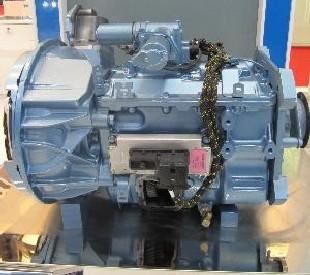
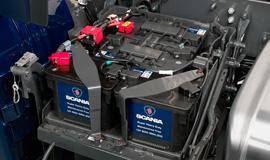
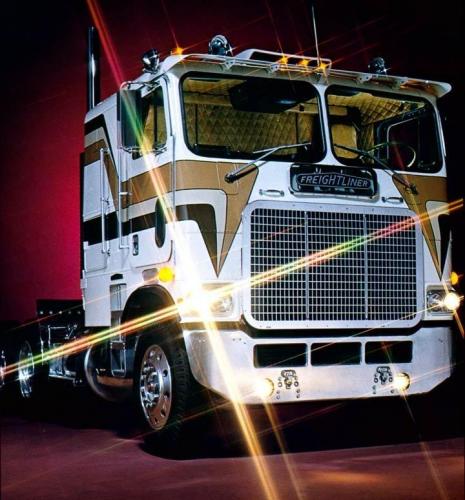
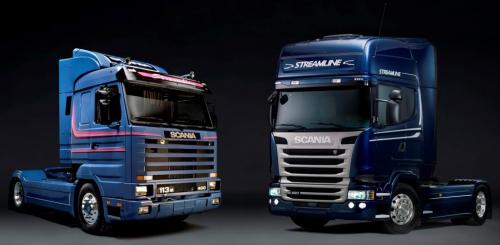
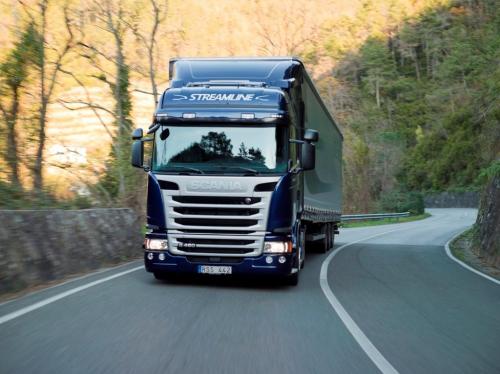
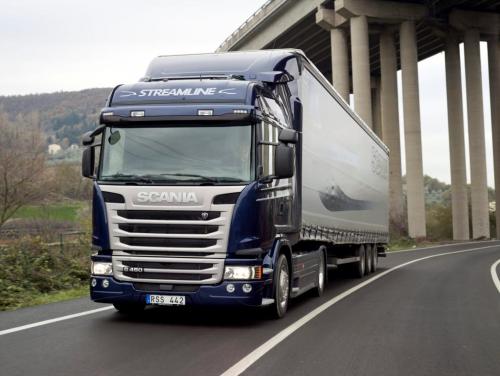
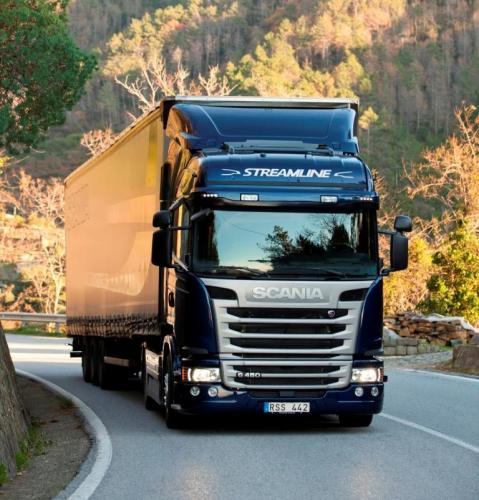
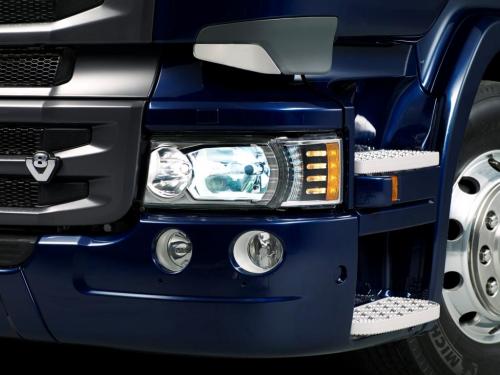
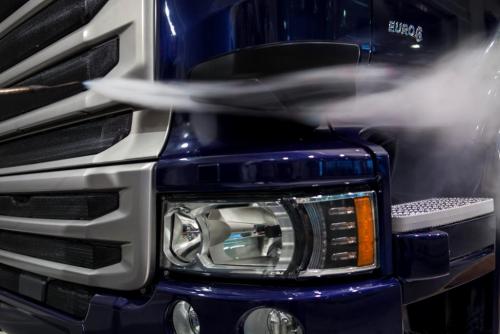
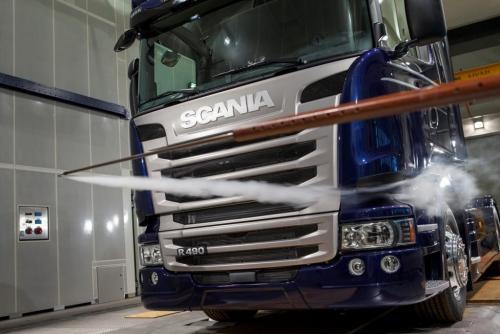
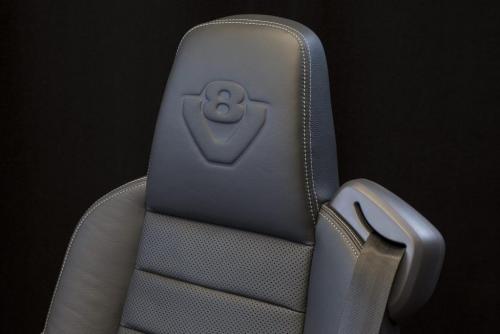
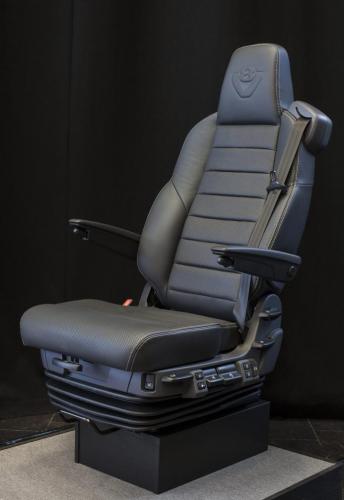
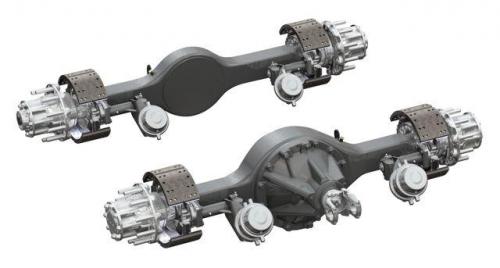
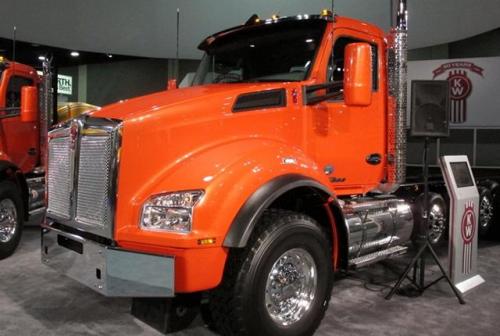
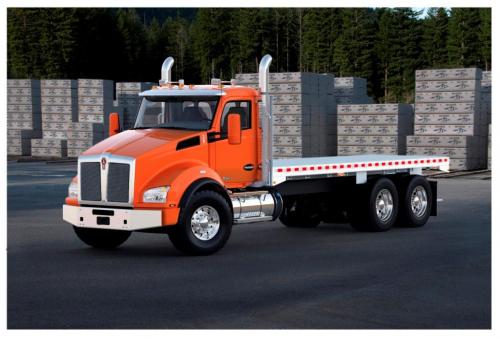
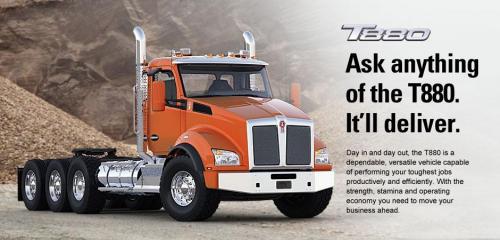
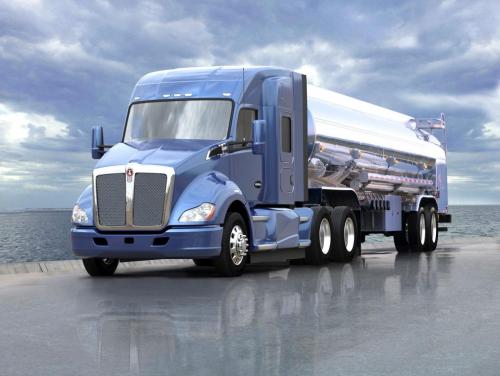
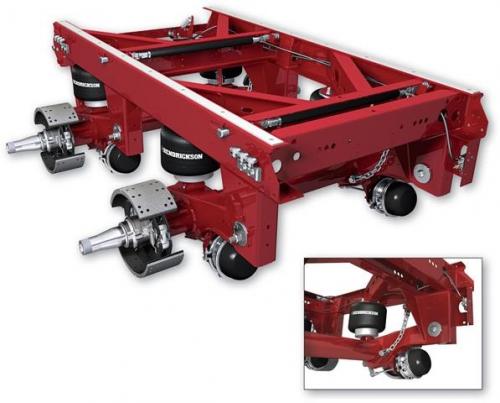
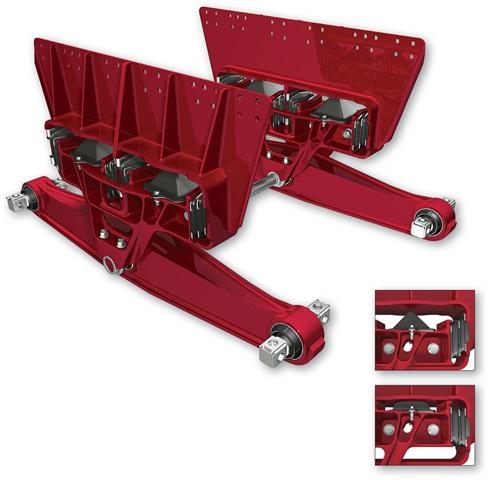
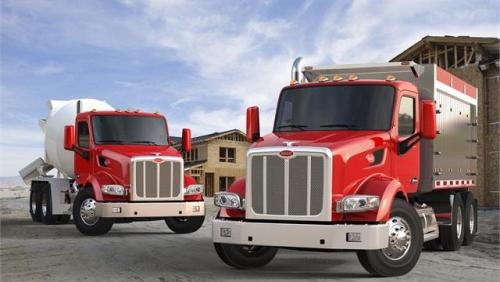
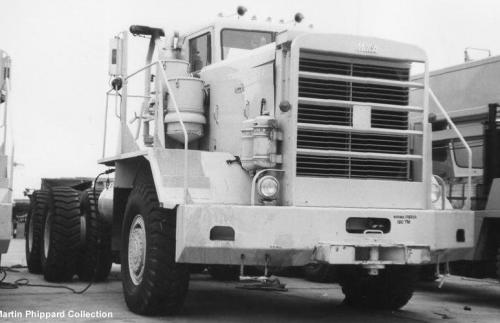
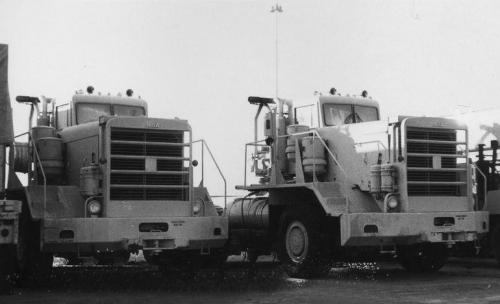
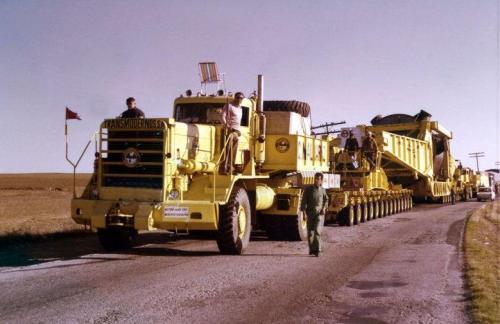

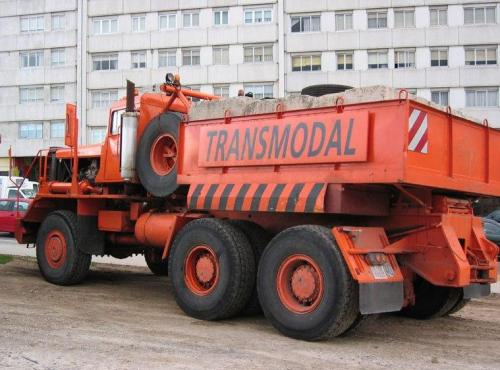
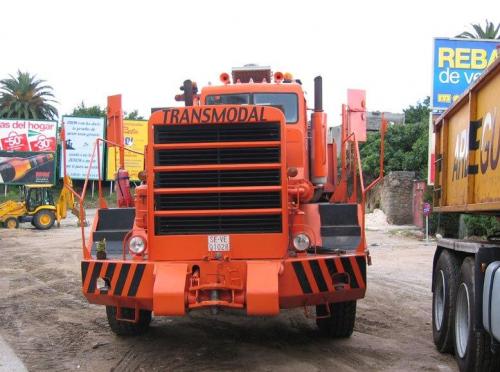
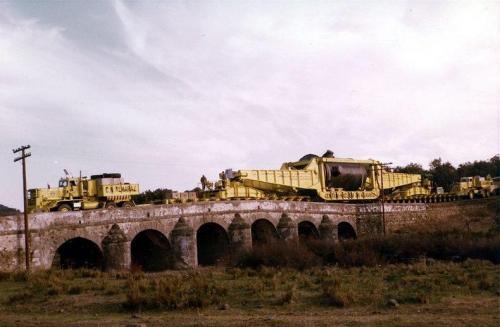

ConMet PreSet Plus hubs to be standard on Peterbilt models
in Trucking News
Posted
Fleet Owner / March 25, 2013
PreSet Plus hub assemblies from Consolidated Metco (ConMet) will be standard on all Peterbilt Class 8 trucks manufactured at its Denton, TX, plant, beginning in July.
“Peterbilt trucks have always been at the forefront of product technology and innovation,” explains Bill Kozek, Peterbilt general manager. “ConMet’s PreSet Plus hub assemblies support that tradition by insuring our trucks are equipped with the most advanced wheel ends on the market.”
PreSet Plus hub assemblies feature ConMet Premium bearings, which offer:
PreSet Plus hubs offer an integrated spindle nut that simplifies installation, protects components during installation and removal, and aids in removal of the assembly during service. They also have a patented nut system that increases clamp to improve safety and eliminate adjustments required to engage a locking ring, and a new bearing spacer that has been optimized for the PreSet Plus system to accommodate higher clamp loads.
“We wanted to set the bar even higher when it comes to wheel hub technology,” explained Mark Wagner, VP of Wheel Ends for ConMet. “PreSet Plus provides Peterbilt with a product that is easier to install than conventional hubs and is easier for technicians to service.”
All components are field serviceable, the bearings are pre-adjusted, and they include a long life oil seal and magnetic fill plug on drive and trailer hubs for inspection of metal particles in lubricant.